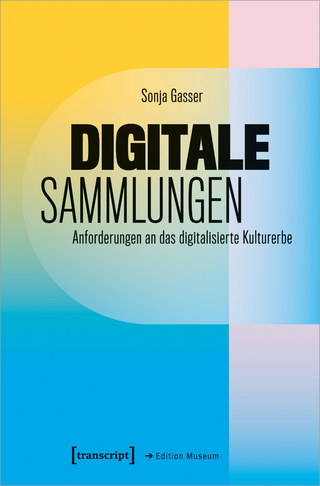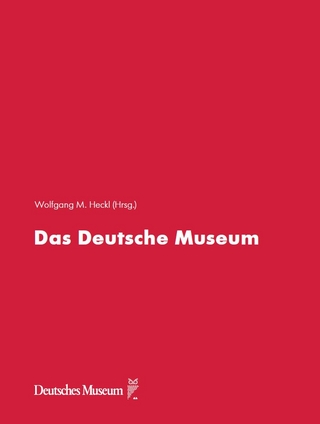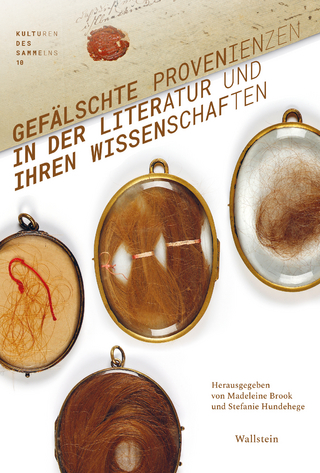
The Political Afterlife of Sites of Monumental Destruction
Reconstructing Affect in Mostar and New York
Seiten
2021
Routledge (Verlag)
978-1-032-24219-4 (ISBN)
Routledge (Verlag)
978-1-032-24219-4 (ISBN)
In this volume Andrea Connor examines these two sites, physically transformed through acts of cultural destruction and their contested reconfiguration in new, highly politicized contexts.
What happens when a monumental thing is physically destroyed? Is its "life" as a socially significant, presencing thing at an end? Or might the process of destruction work to enhance its symbolic force, mediating work and presencing power? In this book Andrea Connor traces the ‘afterlife’ of two exemplary examples of monumental destruction and their re-investment with cultural value and symbolic significance.
In 1993, during the Bosnian war, the Mostar Bridge was completely destroyed. Reconstructed in 2004, as an exact copy of the original, this "new Old Bridge" has assumed an afterlife as an intentional monument to reconciliation. The World Trade Centre, in New York, has also been transformed since its destruction in 2001, as a place of national mourning and remembrance, a symbolic void marking a singular act of terrorism. Using recent work on affect and object agency Connor considers their contested reconfiguration as sites of collective remembering and forgetting in new highly charged political contexts. She argues for a more expansive notion of reconstruction – encompassing not only the material and symbolic afterlife of both things but also their affecting afterlives as they are re-assembled in the present.
Provoking a reconsideration of the way monuments and heritage sites, even in their absence, become powerful agents of historical narrativization, this work will be of interest to students and scholars in a range of fields including international relations, cultural studies, critical heritage studies, and material culture studies.
What happens when a monumental thing is physically destroyed? Is its "life" as a socially significant, presencing thing at an end? Or might the process of destruction work to enhance its symbolic force, mediating work and presencing power? In this book Andrea Connor traces the ‘afterlife’ of two exemplary examples of monumental destruction and their re-investment with cultural value and symbolic significance.
In 1993, during the Bosnian war, the Mostar Bridge was completely destroyed. Reconstructed in 2004, as an exact copy of the original, this "new Old Bridge" has assumed an afterlife as an intentional monument to reconciliation. The World Trade Centre, in New York, has also been transformed since its destruction in 2001, as a place of national mourning and remembrance, a symbolic void marking a singular act of terrorism. Using recent work on affect and object agency Connor considers their contested reconfiguration as sites of collective remembering and forgetting in new highly charged political contexts. She argues for a more expansive notion of reconstruction – encompassing not only the material and symbolic afterlife of both things but also their affecting afterlives as they are re-assembled in the present.
Provoking a reconsideration of the way monuments and heritage sites, even in their absence, become powerful agents of historical narrativization, this work will be of interest to students and scholars in a range of fields including international relations, cultural studies, critical heritage studies, and material culture studies.
Andrea Connor teaches at the University of Technology, Sydney and works at the City of Sydney, Australia.
Preface Monumental Affect
Chapter 1 Affecting Presence: Memory, Agency and the Power of Monumental Things
Chapter 2 Urbicide and the Destruction of "Bridge-ness" in Mostar
Chapter 3 Afterlife: Anchoring Affect/Reconstructing "Bridge-ness" In Mostar
Chapter 4 Skyscraper Dreaming: Monumentality, Modernity and The Destruction the Twin Towers
Chapter 5 Filling the Void: Embodying the Uncanny Space of Ground Zero.
Chapter 6 Faith in Steel: Authenticity, Steel Beams and the Fragmented Afterlife of the Twin Towers
Conclusion Affecting Afterlives
List of references
| Erscheinungsdatum | 14.12.2021 |
|---|---|
| Reihe/Serie | Interventions |
| Zusatzinfo | 5 Illustrations, black and white |
| Verlagsort | London |
| Sprache | englisch |
| Maße | 156 x 234 mm |
| Gewicht | 317 g |
| Themenwelt | Kunst / Musik / Theater ► Kunstgeschichte / Kunststile |
| Reisen ► Reiseführer | |
| Geisteswissenschaften ► Geschichte ► Hilfswissenschaften | |
| Naturwissenschaften ► Geowissenschaften ► Geografie / Kartografie | |
| ISBN-10 | 1-032-24219-1 / 1032242191 |
| ISBN-13 | 978-1-032-24219-4 / 9781032242194 |
| Zustand | Neuware |
| Haben Sie eine Frage zum Produkt? |
Mehr entdecken
aus dem Bereich
aus dem Bereich
Anforderungen an das digitalisierte Kulturerbe
Buch | Softcover (2023)
transcript (Verlag)
29,00 €
Buch | Hardcover (2024)
Wallstein Verlag
38,00 €


